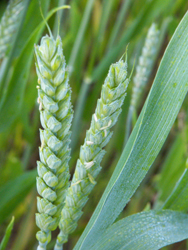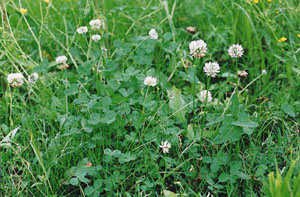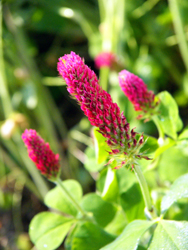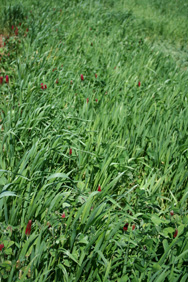(Rogers, Broughton, Smith and Wszelaki)
Green manure is a type of cover crop grown primarily to build up and maintain soil organic matter and soil nutrients. Green manure crops are often grown for a specific period, and then plowed under and incorporated into the soil before the planting of a cash crop. We are evaluating the performance of different green manures across three planting dates (mid-September, mid-October and mid-November). Five grains and five legumes comprise the crops used to create 35 treatment combinations (each crop evaluated individually and with a companion grain/legume) that will be evaluated based on biomass production, weed suppression and soil nutrient availability.

The crops being studied are:
Grains
Winter wheat
Potential benefits: erosion control, weed suppressor, nutrient catch crop, “cash and cover” crop, soil builder and organic matter source
Winter oats
Potential benefits: affordable biomass, smother crop, nutrient catch crop, Fall legume nurse crop, Spring green manure or companion crop
Triticale
Potential benefits: erosion control, nutrient catch crop, affordable biomass, good companion crop, organic matter source
Winter rye
Potential benefits: erosion control, fits many rotations, nutrient catch crop, weed and pest suppressor, organic matter source, companion crop/legume mixtures
Barley
Potential benefits: erosion control, weed and pest suppressor, nutrient recycler, nurse crop, organic matter source


We are investigating cover crop mixtures or companion crops, as combining crops can provide more benefits than planting an individual cover crop by itself. Mixtures can: 1) provide insurance that at least one crop will be successful; 2) serve as nurse crops, meaning that one crop can help the other crop to become better established; 3) act synergistically, for example, in legume/grain mixes, the grain can help retain (trap) the nitrogen fixed by the legumes and the nitrogen fixed by the legumes increases the grain biomass; and 4) maximize biodiversity, since each crop supports and alters the microbial biodiversity in its own way.

Legumes
Austrian winter pea
Potential benefits: affordable biomass, nitrogen source, rotational effects, low water user, rapidly growing, forage booster, long-term bloomer, chill tolerant
Hairy vetch
Potential benefits: nitrogen source, soil conditioner, early weed suppressor, good grain companion, low water user, phosphorous scavenger, widely adapted
Ladino white clover
Potential benefits: nitrogen source, tolerates field traffic, excellent living mulch, value-added forage, soil protector, good companion crop
Red clover
Potential benefits: nitrogen source, widely adapted, soil conditioner, provides beneficial habitat
Crimson clover
Potential benefits: nitrogen source, affordable biomass, good companion crop, provides benefical habitat and nectar, nutrient cycler
